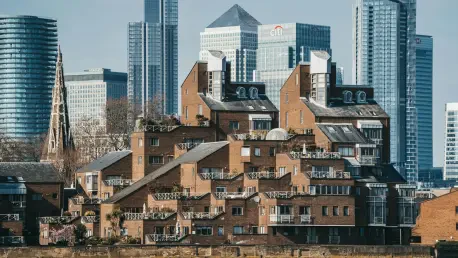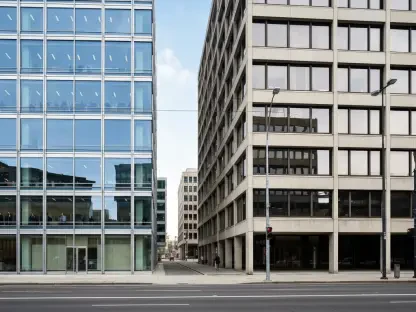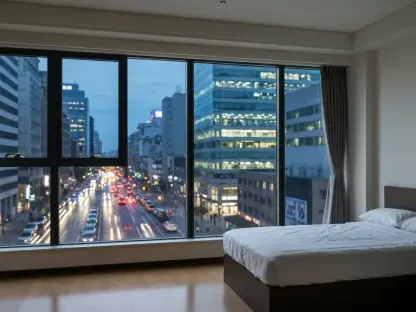The evolving landscape of Build-to-Rent (BtR) in the UK is gaining momentum, offering viable housing amidst dynamic societal changes and growing urban pressures. With stringent housing demands, BtR’s integration into the private rented sector (PRS) is reshaping rental dynamics and contributing significantly to addressing the country’s varied housing needs. Recognized as a pivotal sub-sector within the PRS, BtR attracts a wide demographic range, from middle-income earners to young professionals, providing tailored housing solutions without compromising on quality. This burgeoning segment is not only providing rental options that align with national benchmarks of affordability but is also fostering mixed-income communities that resemble the composition of the broader PRS.
Key Findings from Recent Reports
Understanding Tenant Profiles
Recent findings from the fifth annual report titled “Who Lives in Build to Rent?” underscore BtR’s impact in creating inclusive rental environments. Conducted by the British Property Federation (BPF), Association for Rental Living (ARL), and PriceHubble, the study harnessed data from over 48,600 renters across 174 developments. The comprehensive dataset paints a picture of BtR delivering on mixed-income communities, reflecting deeper trends in the PRS. Among the divided analysis, the report examined 36,600 renters in 97 multifamily housing (MFH) developments and nearly 10,000 residents in 77 single-family housing (SFH) schemes. The evidence suggested BtR’s successful catering to the rental needs of varied age demographics and economic profiles.
Affordability and Amenities
Affordability within BtR has shown synergy with national rental market standards, emphasizing its accessibility and attraction. Renters in BtR typically allocate around 30% of their household income to rent, mirroring PRS affordability patterns. This fiscal alignment extends across diverse household types, including couples, families, and single renters, ensuring inclusivity despite economic variances. In addition to fiscal parity, BtR ventures offer substantial value by incorporating onsite amenities like gyms, coworking spaces, and fitness studios within rental prices, while the PRS typically charges separately for these facilities. Zero-deposit schemes and inclusive utility bills add to BtR’s allure, proving essential in current cost-of-living challenges.
Economic Insights of BtR Tenants
Income Trends
Insights into tenant income bands within BtR portray compelling economic narratives. A considerable 43% of BtR tenants earn between £26,000–£50,000, which parallels the PRS demographic where 45% fall in the same bracket. It’s noteworthy that the PRS also features a lower income band of £19,000–£25,000, indicating distinct yet overlapping tenant profiles between sectors. BtR’s versatility extends further in SFH arrangements, where 76% of renters earn under £38,000, contrasting with 61% in the PRS and 38% in BtR overall. This contrast illustrates BtR’s potential for economic inclusivity, accommodating diverse income spectrums while aligning closely with national tenant profiles.
Age Demographics
The age demographics within the BtR sector highlight its popularity among younger cohorts. Notably, individuals aged 25–34 account for 51% of BtR renters, a significant proportion compared to 42% in the PRS. This preference among youth correlates with BtR’s attractiveness, especially among couples and sharers, constituting 60% as opposed to 43% within the PRS. Furthermore, within SFH schemes, families constitute 38% of the tenants, underscoring BtR’s appeal to varied household configurations. These insights reinforce BtR’s potential to address diverse demographic needs effectively.
Importance in Meeting Housing Supply Needs
Market Pressures and Regulatory Influence
In response to market pressures, BtR’s role in expanding residential supply is crucial, as emphasized by Melanie Leech from BPF. She articulates that BtR’s contribution is indispensable in navigating rental cost inflations and the broader housing crisis. Institutional support ensures BtR remains a viable mechanism to counteract upward cost pressures and meet legislative targets outlined by the UK Government. The sector’s importance extends beyond immediate housing supplies, positioning BtR as pivotal in achieving ambitious housing targets amid shifting market dynamics.
Future Development Trajectories
Looking forward, Brendan Geraghty from ARL suggests an inclusive development approach within BtR to cater broadly across demographics. This vision promotes accessibility while laying the groundwork for secure and desirable housing options. Real estate economist Julia Middleton highlights the multi-year data contributions that are now steering significant insights. She notes diversification trends propelled by varied BtR offerings, ranging from premium schemes with extensive amenities to affordable options with minimal features. This expansion addresses geographic limitations and adapts to changing tenant needs effectively.
Addressing Urban Housing Challenges
London’s Unique Housing Context
Stephanie Pollitt from BusinessLDN recognizes BtR’s pivotal role in London’s acute housing challenges. The capital city demands varied housing solutions to accommodate diverse demographics and income levels, with BtR contributing appreciably to alleviating market pressures. Recent ameliorative policy measures aim to enhance housebuilding strategies, yet regulatory bottlenecks, notably in the Building Safety Regulator’s gateway process, require significant attention. These obstacles pose challenges in fast-tracking BtR’s implementation and ensuring its contributions are realized effectively.
Pathways for Expansion
The Build-to-Rent (BtR) sector in the UK is gaining traction, offering essential housing solutions amidst social change and increased urban demands. With stricter housing needs, BtR’s entry into the private rented sector (PRS) is impacting rental dynamics, providing significant support to the nation’s varied housing requirements. As a key component of the PRS, BtR attracts a wide range of tenants, including middle-income earners and young professionals, and delivers customized housing solutions without sacrificing quality. This rapidly growing segment not only meets national affordability standards but also promotes diverse communities that mirror the broader PRS demographics. By creating mixed-income neighborhoods, BtR helps balance rental demand and supply while supporting economic mobility. Ultimately, it presents a forward-thinking approach to rental housing in a period of transformative urban challenges, ensuring sustainable living spaces that cater to evolving societal needs.









